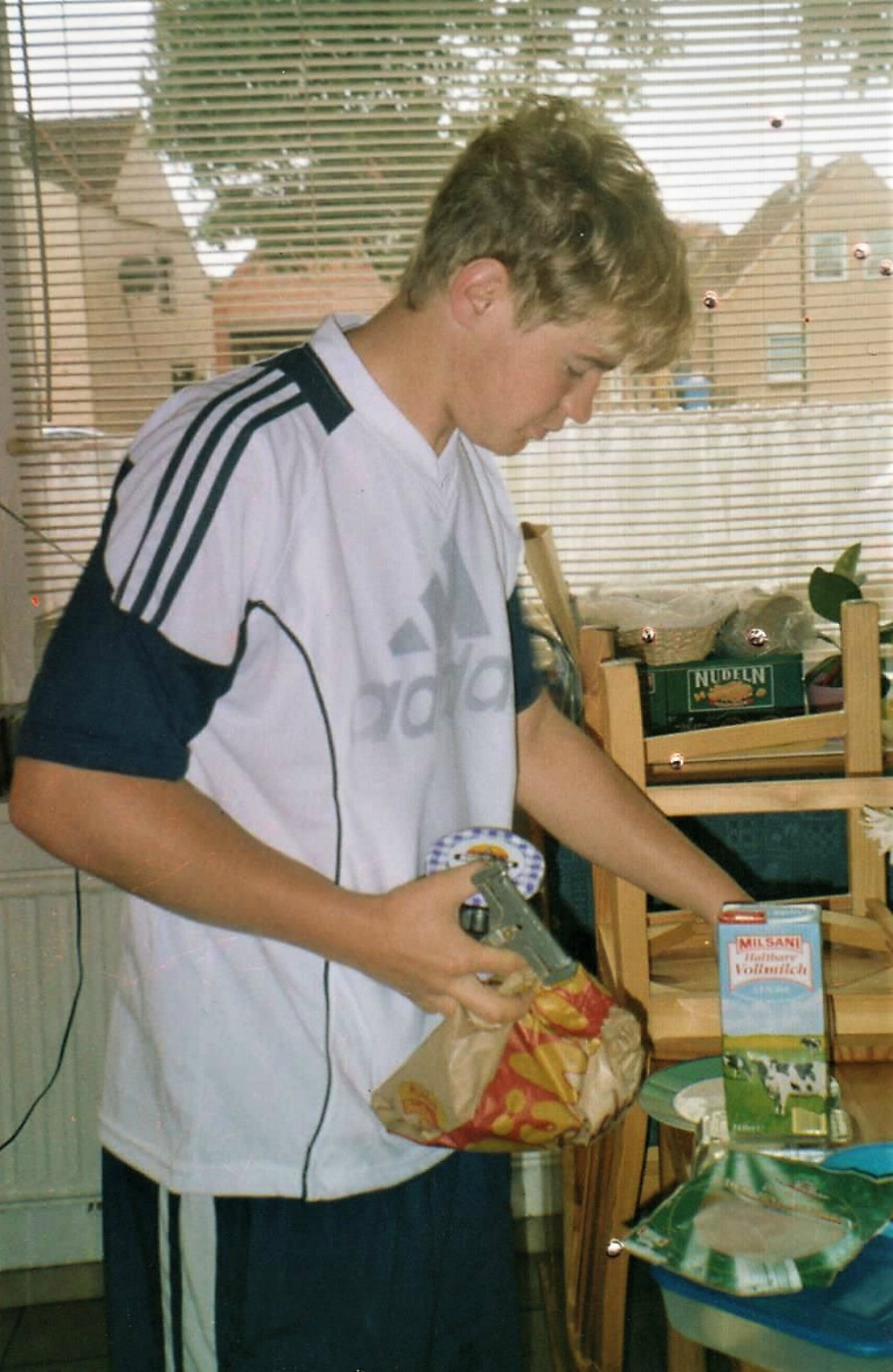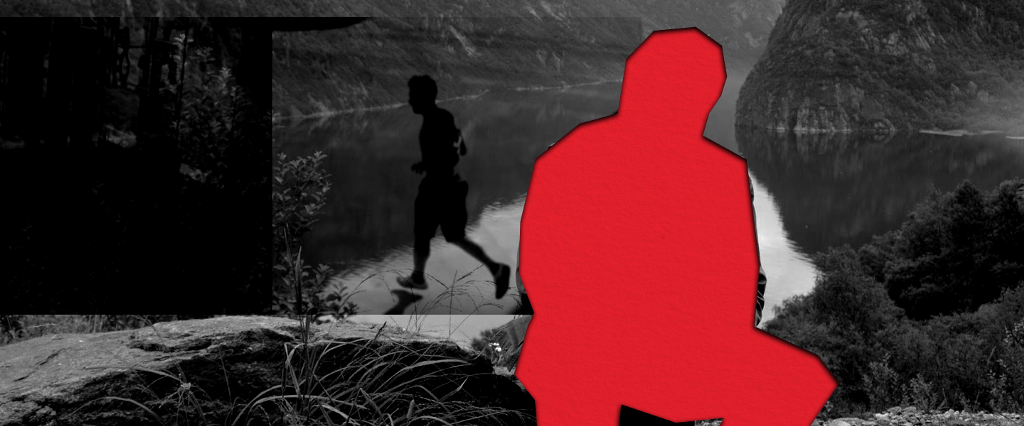On July 8, 2014, just after sunrise, 28-year-old Lars Mittank arrived at an airport in Bulgaria to catch his flight home to Germany. He stepped out of a taxi, picked up his bags and walked into the departures hall.
Then, in a flash, he ran out of the terminal, without his luggage, as if someone, or something, were chasing him. He looked frightened, paranoid and possessed. He stopped at the main entrance for a brief second before he ran across the parking lot, climbed over an 8-foot barbed-wire fence and disappeared into the woods and into the blank.
He was never seen again.
Twenty-Four Hours Earlier
It was the final moments of Mittank’s vacation, the first time he’d been abroad. Mittank and his friends, five former schoolmates, all in their late 20s, had spent the previous week in Varna, a beach resort that sprawls along Bulgaria’s Black Sea Coast (aka the Bulgarian Riviera).
But now, it was time to leave.
The group had booked a flight to Hamburg, Germany, 1,200 miles northwest of Varna, for later that day. From there, it was a short train ride to Itzehoe in the north of Germany where they all grew up, lived and worked. “The week went by really fast,” Paul Rohmann, one of Mittank’s friends, told German television in 2016. “We relaxed on the beach, swam in the pool, played football, went clubbing. He was relaxed. He was in a good mood.”
“I noticed he didn’t eat much,” added Tim Schuldt, who was also on the trip. “He’d have a bowl of soup or a small plate of salad, and that was it.”
Nothing else, however, struck them as odd.
By all accounts, Mittank was just a regular guy. He was a football fan. He supported his local team, Werder Bremen, the “Green-Whites.” He wore Adidas T-shirts and scruffy sneakers. He had plenty of friends, a girlfriend and a decent job at a local power plant. He always visited his parents. In fact, after his dad’s stroke, he’d help out around the house after work. Essentially, there was nothing unusual about him.

But after the group checked out of their hotel at noon, Mittank made an announcement — he’d changed his travel plans. He’d gone to the hospital earlier that morning. A couple of days before, he’d ruptured his eardrum during a night out. A change in cabin air pressure could’ve made it worse, so he had to stay put for a bit — doctor’s orders. It was no big deal, though, just a temporary setback. He’d been prescribed antibiotics (something called Cefuroxime 500), and he could fly home the following day. He told his friends to go on without him.
He said he’d be alright.
Mittank, however, needed a place to crash in the meantime. The problem was it was high season, and nearly every room in nearly every hotel was occupied. Eventually, he did find one place with vacancies — Hotel Color. An added bonus: The rooms were cheap, and it was close to the airport.
It was around this time, though, that his behavior changed. He called his mom from his room. He was whispering, acting strangely. He told her to cancel his bank cards. He said he was being followed. He was looking for a place to hide. Then he hung up.
“I thought, God, my son is in danger,” Sandra Mittank told German TV. “I could hear his heart pounding over the phone. He said people were trying to rob him or kill him.”
Later that night, he texted her about his antibiotics, which doctors routinely prescribe for ear infections: “What is Cefuroxime 500?”
“Why did he text me about those tablets?” Sandra asked, again on German TV.
After Mittank disappeared, the police checked the hotel’s security cameras. They found him pacing up and down the foyer, looking out the window, hiding in the elevator. At 1 a.m., he left the hotel for an hour, before returning to his room. No one knows where he went.
When dawn broke, he called his mom again. He said the people who were chasing him were getting close. “In hindsight, I should have asked him more questions,” Sandra has said. “But his cell phone was running out of battery, so our final conversation didn’t last for long.”
Mittank waved down a taxi and rode to the airport. He texted his mom: “I just made it to the terminal…”
He’d soon be home. Still, he needed an okay from the airport doctor. He walked into Dr. Kosta Kostov’s office, dropped his bags on the floor and sat on a chair. He was still acting strange. “It was just a standard checkup,” Kostov tells me. “But he was really nervous and erratic.”
Kostov examined Mittank’s ear. Everything was fine. He could get on the plane. But the paranoia festered. “He didn’t trust the medication he’d been given for his ear pain,” Kostov says. “Looking back, the whole thing was bizarre.”
A construction worker entered the room. (The terminal was being refurbished.) Mittank started to tremble. He muttered something under his breath. Then he said: “I don’t want to die here. I have to get out of here.”
Suddenly, he leapt from his chair and exited the room, leaving his luggage behind. He started running — past the boarding gates, check-in desks and baggage drops, through the main entrance, across the parking lot and into the wooded area that surrounds the terminal, where the trees are thick and packed close together. The airport’s security cameras scanned him like a barcode reader. Later, the footage made the national news. “Every time I see that video, I feel like I want to protect him,” Sandra has said. “I want to rescue him.”
Mittank’s wallet, cell phone and passport were still in his backpack. All he had were the clothes on his body: a yellow T-shirt, jean shorts and white sneakers.
72 Hours Earlier
The fight took place in a McDonald’s, after a boozy all-nighter. It was between him and a group of other German tourists. It was over football. He was a Bremen fan; they supported rival team Bayern Munich. He stood no chance. It was four against one, and his friends were back at the hotel.
He said someone punched him in the face. The thump ruptured his eardrum. He got out of there as quick as he could. “I heard about it the next morning,” his friend Paul has said. “I was surprised. He was a peaceful guy.”
Mittank told his friends he was fine. But he could have sustained a concussion, where symptoms don’t show up for a day or two. It might explain his confusion, his anxiety and his fear of being followed. “A forceful blow to the head can result in a concussion,” says Dr. Jeff Konin, who specializes in physical therapy and injury prevention at the University of Rhode Island. “However, odd behavior isn’t usually this extreme a few days after an incident. It takes years, or it happens after multiple hits to the head over time.”
“Perhaps that fight stressed him out, and it triggered something in him,” Sandra has theorized, while emphasizing that Mittank had no history of mental illness.
The medication seems blameless, too. “He didn’t take those antibiotics. He didn’t even fill out his prescription,” Kostov remembers. “So his behavior couldn’t have been a result of that. I can’t think of a single reason why he left my office in such a panic. I’m still confused.
Not to mention, Kostov wonders: “Why did he abandon all of his belongings?”
Three Weeks Later
A week passed, then another and another. Mittank had been missing for almost a month. Sandra hired a local private investigator, Andreas Gütig, who jumped on the case. He watched the airport video over and over again. (Perhaps the police missed something, but they hadn’t.) He contacted hospitals and homeless shelters. (Perhaps without identification, Mittank was simply a John Doe in some Bulgarian ER, but he wasn’t.) Gütig traveled to Varna and handed out missing-person flyers: Have you seen this man? Five-foot-9, 180 pounds, average build. No one, however, recognized his blonde hair, brown eyes or wide nose.
Maybe Mittank started over. But there was no reason for him not to go home. He was close with his parents. He wouldn’t have done that to them. “He was my only child, so we had a special bond,” Sandra has said.
There were sightings, but the police couldn’t validate them. A year after he disappeared, a trucker saw Mittank hitchhiking on a deserted road near Varna. There was a homeless man in Poland who looked just like him. Someone claimed to have met him in Canada and posted about it on Reddit. (Most of the respondents called bullshit.) “I remember watching a YouTube video about him,” the Redditor wrote. “I’m 99.9 percent sure it’s him. He looked rough, almost homeless.”
Mittank was the outdoors type. He knew how to hunt, fish and trap. So could he have survived the elements? “Varna gets really hot in the summer [temperatures reach the mid-90s], and without a water source, it’s pretty much impossible to stay alive,” a local tells me. “There’s a big river near the airport, but that leaves food and shelter. If he tried to survive in the woods, he died there. He might have found an abandoned cabin somewhere, but there isn’t much to eat in the wilderness.” The police searched the area with drones, then cadaver dogs. But they found nothing.
“There’s a good chance he’ll come back,” Sandra has said. “He just needs my help.”
Two Years Later
In December 2016, it looked like there was a break in the case. Police in Porto Velho, Brazil, found a man walking along the highway, barefoot. He was disorientated, confused. His clothes were rumpled. He had no identification, no past. He didn’t know who he was. A photo of him, laying on a hospital bed, circulated on social media. He looked just like Mittank: same height, same build. Everything was dead-on. Could it be?

Unfortunately, not.
The man in the hospital bed was Anton Pilipa, a Canadian humanitarian worker who went missing five years before. He reunited with his family. Sandra hopes for a similar outcome. “If my child is in trouble, then I have to help,” she’s said. “I have a feeling that he needs me.”
Today
Nearly four years since his disappearance, Mittank is maybe the most famous missing person on YouTube. Sixteen million people have watched his last-known moments on clickbaity video compilations: “5 Unexplained Disappearances With Mysterious CCTV Footage”; “5 Mysterious Unsolved Cases”; “10 Strange Mysteries Caught on Tape.” (He ranks at №2, №4 and №5, respectively.)
In the comment sections, speculation swirls. “He planned his disappearance. I would bet money on it,” one person writes. “He swallowed drugs and freaked out because he was scared of getting caught. He later died from an overdose,” theorizes another.
There are more sinister theories, too. In large part because it happened in Bulgaria, which has one of the highest rates of human trafficking in the European Union. People are forced into slavery, prostitution and drug smuggling. Some have their organs removed, against their will. “I think if he is alive, then he’s either being tortured or was sold as a sex slave,” another commenter guesses. “It’s definitely not anything good, and he would be better off dead if that were the case. I feel really bad for his mother. I can’t imagine losing my boy and not having closure.”
Others on YouTube probe the airport’s security video, freeze-frame by freeze-frame. In his video “Where is Lars Mittank?,” John Lordan chews over the few clues. “It’s just another missing-persons case, but the details leading up to Mittank’s disappearance, and of course, the video footage takes it to another level in terms of people’s interest,” he says. “People can watch the CCTV footage at any time. They can see what happened and judge for themselves. I believe that, ultimately, people want to help each other, and a lot of the comments on my video support this. The families of missing persons deserve to be freed of the pain and stress of not knowing what happened to their lost loved ones.”
Lordan has his own theories as well. “It’s clear he was struggling with a severe paranoia. But was it due to the reality of his situation? Or how he perceived it? If it was his perception, which I think is more likely, we’re looking at a psychological break, which, of course, then begs other questions: Was this due to an undisclosed or possibly undiagnosed mental disorder? Or a terrible side effect of legal or illegal drugs? Or some combination of those factors?”
“There are several factors that could have brought it on,” a redditor argues. “We don’t know how serious the hit to the head was, other than from a doctor who is inclined to downplay it since he only treated the ruptured eardrum. Combine that with experimenting with drugs, alcohol and a lack of sleep… three things that aren’t uncommon for people to experience in their 20s while on holiday. That doesn’t, though, explain the airport video. For someone who has left his bags and is running, he appears remarkably uninterested in what’s going on behind him. Even with psychosis, you would be expecting him to be extremely concerned about being followed.”
“I still think there’s a chance he lived (at least for a while) afterwards,” another Reddit thread speculates. “This area of Bulgaria can be quite dangerous, and if you’re a confused guy on the street you might not get noticed/help immediately, especially if you’re paranoid and think that you need to be hiding. So he might have ‘fallen in’ with the wrong crowd or just somehow gotten by on the street, where he might still be unless the elements or drugs or violence hasn’t gotten to him.”
Over on Facebook, the Findet Lars Mittank Group has more than 28,000 members. There, they, too, trade theories and share missing-person flyers in different languages — primarily, German, Bulgarian and English. And while every one of them has a different opinion on what happened to Mittank, they share a common goal — to bring him home. After all, as one post from 2015 points out, it’s happened before:
“On Tuesday, someone contacted us who would like to give us courage and hope with his life story. We don’t want to deprive you of this because it sounds incredible, but it’s true: ‘Hello to all who are so brave for Lars, stay tuned and don’t give it up! To give you courage, here only briefly is my personal experience in a similarly desperate situation: In 2010, my brother disappeared from his apartment in July. I reported him missing when I assumed he was in a helpless position. For a long time, there was only uncertainty and no evidence. But in April 2011, I received a surprise call from the police that my brother was found in Spain, penniless and on the street. With the help of the embassy there, I could get him back home. He was all the way from Germany to the south of Spain, just with a backpack. He lived from the fruits of the forest, water from rivers and indeed met nice people who gave him alms. So I think that you must consider this possibility.’”
